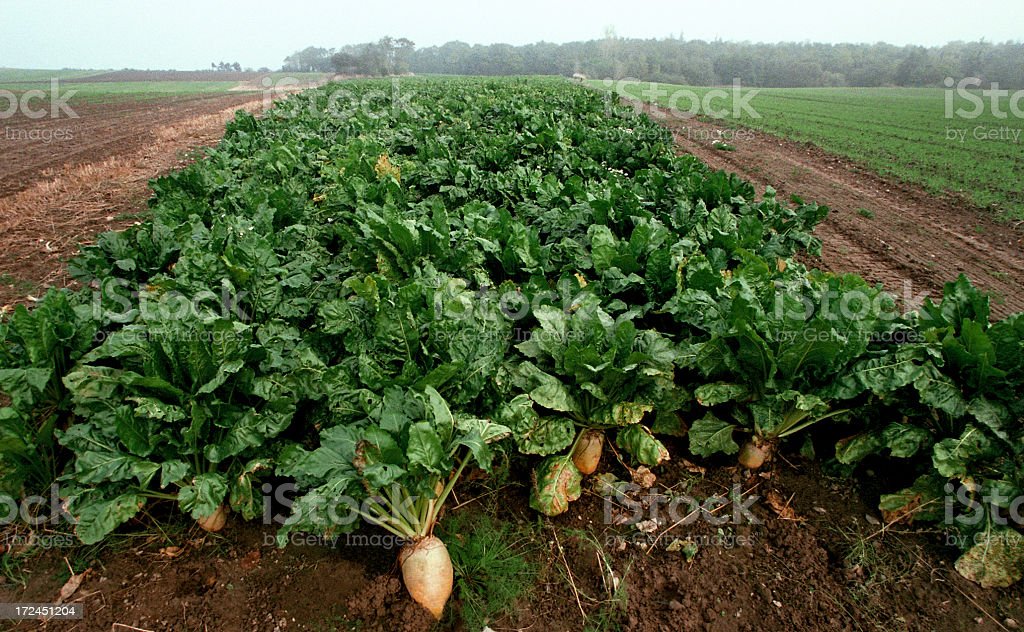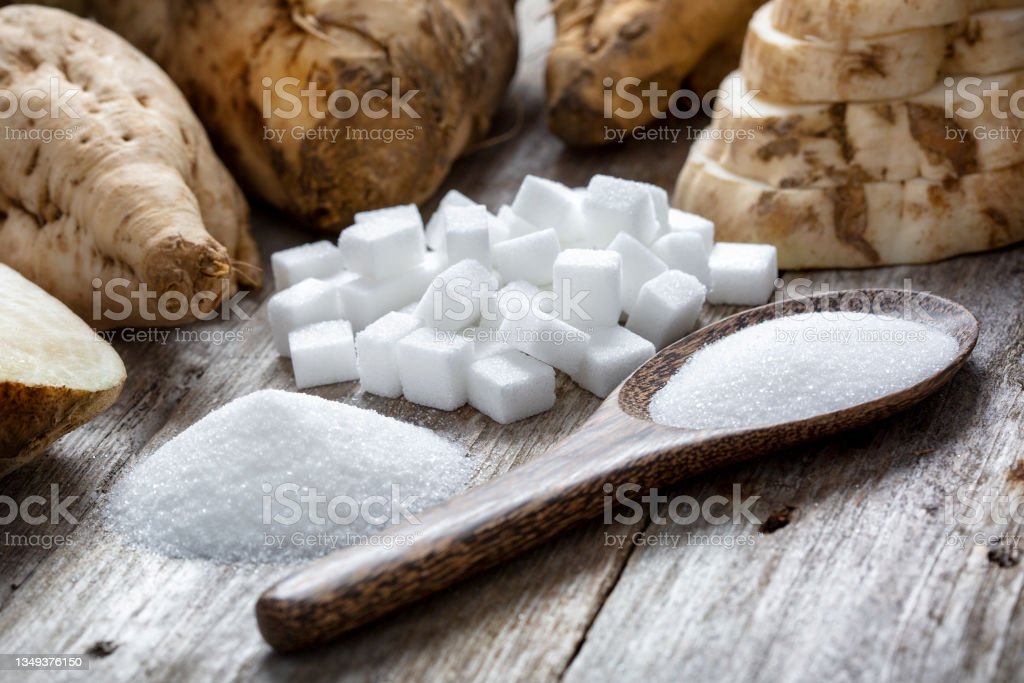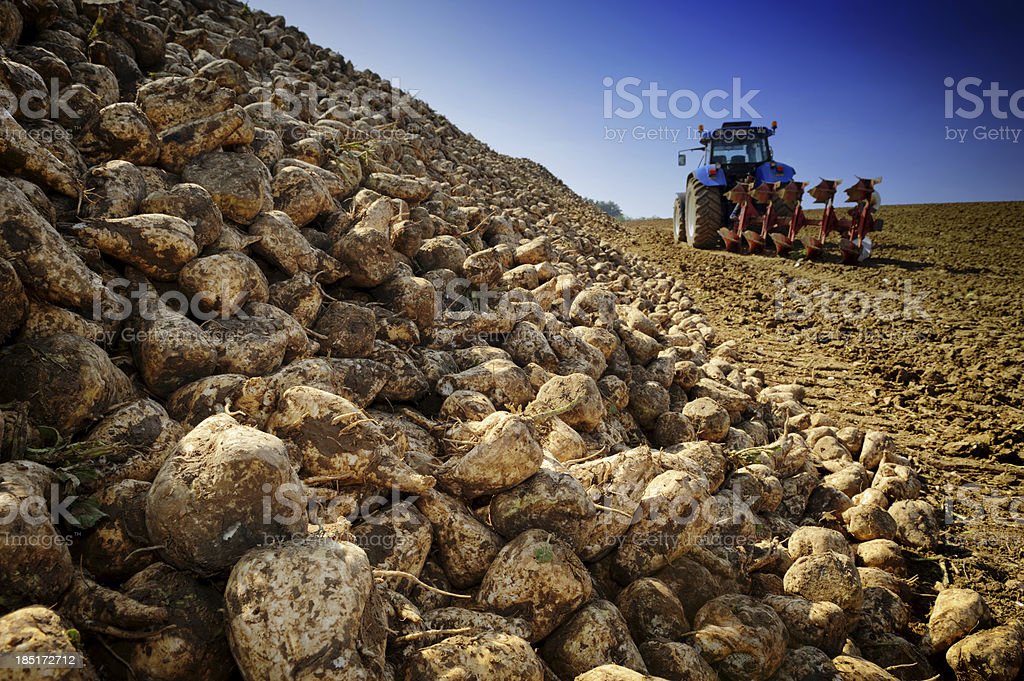
Sugar beet is a root vegetable cultivated mainly for its high sugar content. This crop has been harvested for over two hundred years and is now a significant source of sugar globally. Sugar beet is a versatile crop grown in different climates and soil types. It is a popular choice for many farmers around the world. Beets are used to produce sugar and are also vegetables in cooking. In this article, we will explore the origins and history of sugar beet, its cultivation and harvesting, and the various uses of this versatile crop. We will also examine the nutritional value of sugar beet and its impact on the environment and economy.
What is Sugar beet?

Sugar beet is a root vegetable that is cultivated for its high content of sugar. Sugar beets are grown specifically to make sugar, unlike other beets. They can produce up to 20% of their weight in sugar. The beetroot itself is not only used for sugar production but also as a vegetable in cooking. This versatile crop can be grown in different climates and soil types, making it a popular choice for farmers worldwide. Sugar beet has become an important source of sugar globally, contributing to the food industry and the economy.
Origins and History of Sugar Beet
The origins and history of sugar beet are an important part of understanding this versatile crop’s significance in the food industry and global economy.
Discovery and Development of Sugar Beet
Sugar beet was first discovered in the mid-18th century by a German chemist named Andreas Marggraf, who found that the sugar content in beets was higher than that of sugarcane. Marggraf’s discovery paved the way for the development of sugar beet as a crop for sugar production.
Spread of Sugar Beet Cultivation Worldwide
The cultivation of sugar beet began to spread rapidly throughout Europe, with France becoming the first country to establish a booming sugar beet industry in the early 19th century. Other European countries soon followed suit, and by the mid-19th century, sugar beet had become Europe’s primary source of sugar. The cultivation of sugar beet later spread to other parts of the world, including North America, South America, Asia, and Australia.
Importance of Sugar Beet During Wartime
During World War I and II, sugar beet became an essential crop due to its ability to produce sugar domestically, reducing the reliance on imported sugar. The United States, in particular, significantly increased its sugar beet production during World War II, accounting for approximately 40% of the country’s sugar supply.
Cultivation and Harvesting of Sugar Beet
Cultivating and harvesting sugar beet requires careful attention and expertise at every stage, from planting to processing, to ensure a high-quality sugar crop.
Ideal climate and soil conditions
Sugar beets is grown in a variety of climates and soil types. However, a cool, moist climate with a temperature range of 15°C to 21°C is suitable for sugar beet growth. The soil should be rich in organic matter. It should be well-drained, and free of rocks and other objects. Farmers often rotate sugar beet crops with other crops to maintain soil health and prevent soil-borne diseases.
Planting and growth process
The planting process of sugar beet begins in the early spring or late fall, depending on the climate. Farmers use a special drill to plant the sugar beet seeds in rows, with a spacing of 10-15 cm between plants. Because sugar beet seeds are relatively small, it’s crucial to plant them at a shallow depth of just 1-2 cm.
After planting, the sugar beet plants undergo several stages of growth, including the seedling, rosette, and bolting stages. During these stages, farmers ensure the soil is well-watered and free of weeds, as sugar beet is susceptible to competition from weeds.
Harvesting and processing

Harvesting of sugar beet occurs in the fall when the plants have matured and the sugar content is at its peak. Farmers use a mechanical harvester to uproot the beetroot, leaving the foliage on the ground. The beetroot is then cleaned, sorted, and transported to processing factories for sugar extraction.
Processing sugar beet for sugar production involves several steps including:
- Washing
- Slicing
- Extraction
- Purification
- Crystallization.
To obtain the purest sugar, the extracted juice is carbonated, filtered, and crystallized.
Uses of Sugar Beet

Sugar beet is primarily grown for sugar production, but it also has other uses in various industries. Below are some of the uses of sugar beet:
- Sugar Production: Sugar beet is a significant source of sugar worldwide. The beetroot is processed to extract sugar used in various food products, such as baked goods, beverages, and confectionery.
- Animal Feed: Sugar beet pulp, a byproduct of sugar beet processing, is used as animal feed. It is rich in fiber and protein, making it a nutritious supplement for livestock.
- Bioplastics: Sugar beet pulp can also be used to produce bioplastics. Bioplastics are biodegradable plastics made from renewable resources, such as sugar beet pulp, instead of fossil fuels.
- Bioethanol: Sugar beet can also be used to produce bioethanol, a renewable fuel that can be used as a substitute for gasoline. The sugar in the beetroot is fermented to produce ethanol, which can be used in cars and other vehicles.
- Beetroot as Food: Beetroot, the root vegetable of the sugar beet, is also consumed as a vegetable in cooking. It can be boiled, roasted, pickled, or grated raw in salads.
- Cosmetics: Sugar beet extract is used in cosmetic products, such as moisturizers and anti-ageing creams. It is believed to have hydrating and anti-inflammatory properties that benefit the skin.
Nutritional Value of Sugar Beet
Here is a chart outlining the nutritional value of sugar beet:
| Nutrient | Amount per 100g |
| Calories | 61 |
| Carbohydrates | 15g |
| Fiber | 0.9g |
| Protein | 1.6g |
| Fat | 0.1g |
| Vitamin C | 4.9mg |
| Folate | 109mcg |
| Calcium | 27mg |
| Iron | 0.8mg |
| Magnesium | 23mg |
| Potassium | 325mg |
| Sodium | 78mg |
| Zinc | 0.4mg |
Note: Nutrient values may vary depending on the specific variety of sugar beet and growing conditions.
Health benefits of consuming sugar beet
Consuming sugar beet can provide numerous health benefits due to its rich nutritional content. Here are some of the health benefits of consuming sugar beet:
Regulates Blood Pressure
Sugar beet is a good source of nitrates, which are converted into nitric oxide in the body. Nitric oxide helps to relax and dilate blood vessels, which can lead to reduced blood pressure. By consuming sugar beet, individuals can regulate their blood pressure and reduce their risk of developing hypertension or other cardiovascular diseases.
Boosts Immunity
Sugar beet is a rich source of vitamin C. It is a powerful antioxidant that helps to boost the immune system. Vitamin C plays an important role in the production of white blood cells and antibodies, which help the body fight off infections and diseases. Consuming sugar beet can provide the body with the necessary vitamin C to support the immune system and prevent illnesses.
Improves Digestive Health
Sugar beet is a good source of dietary fiber which can help promote regular bowel movements and prevent constipation. Additionally, fiber in sugar beet can help feed the beneficial bacteria in the gut, leading to improved digestive health.
Supports Brain Function
Sugar beet contains a compound called betaine, which has been shown to improve cognitive function and protect against age-related decline in brain function. Betaine works by reducing the levels of homocysteine, an amino acid that can cause inflammation and damage to blood vessels in the brain, leading to cognitive impairment. By reducing homocysteine levels, betaine helps to protect the brain and improve cognitive function.
Anti-inflammatory Properties
Sugar beet contains antioxidants that have anti-inflammatory properties. Inflammation is a natural response of the body to injury or infection. However, chronic inflammation can lead to various diseases. Sugar beet’s antioxidants help to reduce inflammation in the body, potentially lowering the risk of chronic diseases such as heart disease, cancer, and Alzheimer’s disease.
Supports Liver Health
Sugar beet contains betaine, which has been shown to support liver health. Betaine helps to reduce the buildup of fat in the liver and protect against liver damage. This is important because a buildup of fat in the liver can lead to non-alcoholic fatty liver disease (NAFLD), which is becoming increasingly common due to the rise of obesity and diabetes. Betaine has been shown to reduce fat buildup in the liver and improve liver function, making it a beneficial nutrient for overall liver health.
Impact of Sugar Beet on Environment and Economy

The cultivation and processing of sugar beet can have both positive and negative impacts on the environment and economy. Here are some of the impacts of sugar beet:
Environmental Impact
Sugar beet cultivation can lead to soil erosion and water pollution due to the use of fertilizers and pesticides. Additionally, the processing of sugar beet requires a large amount of water and energy, which can contribute to greenhouse gas emissions and climate change.
However, sugar beet can also have positive environmental impacts. It is a relatively low-input crop that can be grown using fewer pesticides and fertilizers compared to other crops. Sugar beet residue can also be used as a source of biomass energy, reducing the reliance on fossil fuels.
Economic Impact
Sugar beet production and processing can have a significant economic impact. It is a major source of employment in many countries, providing jobs for farmers, laborers, and factory workers. Additionally, sugar beet production can contribute to local and national economies through trade and export.
However, the sugar industry is also heavily subsidized in many countries, which can have negative economic impacts. Subsidies can distort markets and create inefficiencies, leading to overproduction and a surplus of sugar. This can drive down prices and harm the livelihoods of small farmers and workers in developing countries.
Conclusion
Sugar beet is a root vegetable cultivated explicitly for sugar production, but it also has other uses, such as a vegetable in cooking. Sugar beet cultivation and processing positively and negatively impact the environment and economy. While it can provide employment and economic benefits, it can also lead to environmental degradation and market distortions. However, sugar beet has numerous health benefits due to its rich nutritional content, including regulating blood pressure, boosting immunity, improving digestive health, supporting brain function, reducing inflammation, and supporting liver health.
As the world’s population grows, the demand for sugar and other agricultural products also increases. It is important to balance the economic benefits of sugar beet production with sustainable environmental practices to ensure the industry’s long-term viability. Additionally, promoting the consumption of sugar beet as a healthy food choice can support the health and well-being of individuals worldwide. Overall, sugar beet is a versatile crop with numerous benefits and challenges, and its importance in the global food system will likely continue to evolve in the years to come.
Frequently asked questions
Q: What is the difference between sugar beet and sugar cane?
A: Sugar beet and sugar cane are two different crops that are used to produce sugar. Sugar beet is a root vegetable that is grown in cooler climates and is mainly produced in Europe and North America. Sugar cane, on the other hand, is a tropical plant that is mainly produced in countries like Brazil, India, and Thailand.
Q: Is sugar beet a healthy food choice?
A: Yes, sugar beet is a healthy food choice due to its rich nutritional content. It is a good source of fiber, vitamin C, and betaine, providing various health benefits such as regulating blood pressure, boosting immunity, and supporting liver health.
Q: How is sugar extracted from sugar beet?
A: Sugar is extracted from sugar beet by washing, slicing, and boiling the roots to extract the sugar juice. The juice is then purified and evaporated to remove water, leaving behind sugar crystals.
Q: What are some of the environmental impacts of sugar beet production?
A: Sugar beet cultivation and processing can lead to soil erosion, water pollution, and greenhouse gas emissions due to the use of fertilizers and pesticides, as well as the large amount of water and energy required for processing.
Q: Can sugar beet be used for anything other than sugar production?
A: Yes, sugar beet has other uses beyond sugar production. The pulp and molasses byproducts of sugar beet processing can be used as animal feed or for the production of biofuels. Additionally, sugar beet can be used as a vegetable in cooking, and its leaves can be used as a nutritious addition to salads and other dishes.
